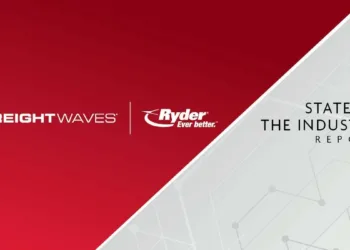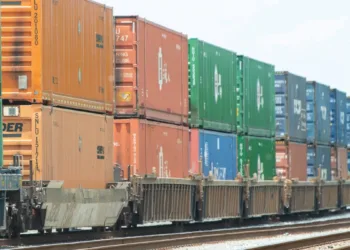
Carriers and drivers are governed by federal hours-of-service (HOS) regulations on a day-to-day basis. These rules dictate schedules and often determine whether a shipment will be delayed. Despite the regulations’ outsize impact on operations, confusion surrounding the rules continues to plague the industry.
Hours of service is consistently one of the topics carriers ask about most often, according to Richard Malchow, a transportation industry business adviser with J. J. Keller.
There are four HOS areas carriers tend to be particularly concerned about, and for good reason. Most violations occur in these areas, and understanding the rules is the first step to following them.
Compliance tracking
Electronic logging devices (ELDs) have simplified compliance tracking for the majority of carriers. For companies that qualify for an ELD exemption, however, compliance tracking can be less clear-cut.
Most ELD-exempt carriers fall into one of five categories:
- Exemption due to short haul radius.
- Special exemption, such as hauling livestock.
- Exemption from the 30-minute break policy due to load type.
- Exemption due to participation in driveaway-towaway services.
- Exemption due to the age of the truck (manufactured before 2000).
It is important for carriers that fall into these buckets to understand that being exempt from electronic logging does not make them exempt from fatigue management. If a tired driver contributes to an accident, a lack of electronic logs will not protect a carrier during litigation. In fact, not having documented proof of fatigue management in some form can be detrimental.
For drivers who are exempt from the ELD mandate but not exempt from logging in general, some kind of log needs to be kept and updated. These drivers often rely on traditional paper logs, but newer electronic options that still capture the necessary elements of a paper log can also be used.
Logs are not required for drivers utilizing a short-haul exemption. For these drivers, carriers should be able to demonstrate hours-of-service compliance using a time record that includes all required elements.
Carriers should understand that being exempt from the ELD mandate is not the same as being exempt from compliance tracking. Keeping logs and/or time records up to date is crucial in heading off litigation risks.
Log auditing
Carriers should review their drivers’ logs regularly to identify any potential signs of record falsification and ensure HOS compliance across their fleets.
As a safeguard against falsification, all logging drivers – whether via ELD or manual – should submit log-supporting documents to their carriers. These documents can fall into several categories, depending on the driver’s activities.
Potential supporting documents include:
- Bill of lading, itinerary, schedule or equivalent document that indicates the origin and destination of each trip.
- Dispatch record, trip record or equivalent document.
- Expense receipt related to any on-duty, not-driving time.
- Electronic mobile communication record, reflecting communications transmitted through a fleet management system.
- Payroll record, settlement sheet or equivalent document that indicates payment to a driver.
“The supporting documents should be used by the carrier to check for log falsifications by verifying on-duty, not-driving activities and to drive time calculations for manually logging drivers,” according to Malchow.
Carriers using ELDs can take additional steps to verify HOS compliance.
Some ELD-specific options include:
- Reviewing unassigned drive time to find occurrences when a driver may not have logged into the device or may have logged out of the device early to avoid going over a limit or to save on-duty and drive time hours.
- Reviewing personal use and yard moves to verify compliant use.
- Reviewing driver edits that may indicate a falsification.
Many ELDs have log auditing logic built into the system. This can be helpful when checking for falsifications, but each flagged violation should be reviewed by a human.
“Just because an entry was flagged does not mean a violation occurred, and it is possible the driver was using an exception or exemption,” said Malchow. “In the case of exceptions and exemptions, drivers must annotate the record.”

Regardless of how a carrier logs compliance, simply scanning HOS records will only reveal the most blatant violations or falsifications. Whether auditing ELD records or manual logs, a system of order is required to ensure accurate and compliant logs.
Carriers can utilize systematic checklists to conduct audits with a high degree of efficacy in catching falsifications, errors and limit violations. Taking a systematic approach to log audits also helps ensure that HOS rules are applied fairly and equally to all drivers.
Understanding exceptions and exemptions
When drivers and other employees do not know the rules and available exceptions, unnecessary violations and errors occur. The only solution to this common problem is frequent, detailed and accessible training.
“Assuming a driver, dispatcher or manager understands the rules and how to properly use exceptions and exemptions tends to be a violation looking for a place to happen,” Malchow added.
Without adequate training, drivers are left to either guess how and when to use an exception or exemption or to ask another individual who may not be well trained how to apply the rule.
To avoid this inefficient – and often costly – scenario, carriers need to offer detailed training to drivers, dispatchers, managers and other employees.
Additionally, companies should ensure that published policies and procedures clearly identify allowed exceptions and exemptions, including how, when and under what circumstances they can be used. These policies should then outline how compliance will be verified.
When people understand how to utilize available exceptions and exemptions, violations naturally decrease. This will have a positive impact that ripples across the entire fleet.
Litigation
It is a common misconception that a plaintiff’s attorney needs to prove fault in order to win a court case against a trucking company. This is far from the truth, especially if the attorney can convince the jury the commercial vehicle should never even have been at the scene due to an hours-of-service violation.
A June 2020 American Transportation Research Institute (ATRI) study involving multiple case reviews found that when HOS was a factor brought against a defendant, it yielded a verdict in favor of the plaintiff 100% of the time. This essentially means that hours-of-service violations all but guarantee a guilty verdict for trucking companies.
Another ATRI study, published in 2021, revealed the financial impact of HOS violations on settlements. The researchers found that the average payment of the cases reviewed was $564,531 when HOS violations were found. Additionally, HOS violations resulted in the third-highest impact of all studied factors on verdicts and settlements.
To improve compliance and reduce liability exposure, HOS training and systematic log auditing are the top two areas to concentrate on. The sooner carriers up their efforts in these areas, the better.
The post Top 4 hours-of-service areas carriers should be concerned about appeared first on FreightWaves.





















